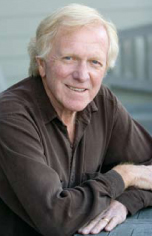Marin has a contrarian’s nature. Thirty-five years ago, America was busy building suburbs, shopping malls and freeways; Marin bucked the development trend and now the county is 80 percent open space.
Today, the county risks becoming part of another national trend—the demise of “downtowns.” It’s not an issue in San Rafael, Corte Madera or Novato, where shopping centers and large neighborhood retail areas keep tax revenues robust and stores full. But business for individual retailers and independent cafes isn’t nearly as strong in Tiburon-Belvedere, Larkspur, San Anselmo and especially Mill Valley.
“For years, Mill Valley had a vibrant downtown economy,” says longtime resident Doug Ferguson. “But now I’m concerned as to what’s causing all these vacancies.” The empty storefronts he’s referring to include a venerable music store, the legendary Sweetwater Saloon, two home furnishing stores, the original site of Smith & Hawken and soon, the original Banana Republic.
Ferguson, a successful business attorney, confesses to “accosting” friends who drive to Costco instead of supporting their local downtown economy. “And when I point out that this is why shops close, they just don’t get it,” he adds. “‘What, my little purchase?’ they ask. ‘It couldn’t make a difference.’ Well, of course it makes a difference.”
And it’s not just Costco but Home Depot, Macy’s, Nordstrom, Barnes and Noble, Borders, Ross, and Target that are taking business away. Then there’s the Internet, where billions in books, barbecues and blouses can be bought with a click of a mouse—without paying for parking meters or gas. Marin’s small-town centers aren’t as busy as they once were. Something needs to be done, but what?
First, downtown merchants must renew their quest for excellence in marketing and merchandising. Just “opening the doors” in affluent Marin is no longer a guarantee of success. Trained (and courteous) salespeople, inviting retail spaces, enticing product displays and the latest in goods and ideas are imperative to luring residents—especially recent arrivals—into downtown areas. And it’s critical that merchants form Business Improvement Districts.
Under state law, BIDs can receive a percentage of the sales tax revenues they generate in order to promote and improve local shopping. This means keeping retail areas attractive, working to maintain a varied mix of commercial tenants, and staging promotions that draw locals in. An example of the latter would be the “Friday Nights on Main” in Tiburon-Belvedere wherein Main Street is closed off, live music is brought in, and restaurant meals are served alfresco to residents—many of whom might have forgotten a downtown even exists.
In turn, residents—most of whom will say they want a vibrant downtown—must make more of an effort to patronize nearby small businesses. Think about it: besides creating local tax revenues and building a better downtown, buying close by is also the green thing to do. Why take a car for miles when you can bike or walk?
Actually, these corrective steps won’t be enough to restore Marin’s downtowns to what they once were. Like it or not, the dreaded “T-word” comes in (standing for tourism, not taxes). “Our sole proprietors can’t exist on resident business alone,” says Kathy Severson, CEO of the 350-member Mill Valley Chamber of Commerce. “They need consumers coming in from somewhere else to survive.” And that means visitors.
Tourism is San Francisco’s number-one industry. Last year more than 15 million people visited “America’s favorite city,” injecting $7.5 billion into its economy. If Marin’s small downtowns hope to get their economic mojo back, they must go after this market. But recent trips give the impression that once tourists leave the magnet of San Francisco, they “leapfrog” over the towns of San Anselmo, Larkspur, and Mill Valley and go miles north to Healdsburg, Napa and Mendocino. Why? Because shops and cafes there, according to some interviewed, are “creative,” “varied” and “intriguing.”
Does this mean it’s time to adjust our somewhat anti-tourist attitude in order for Marin’s downtowns to prosper? You bet it does. “We all have a sense of nostalgia about the way our downtowns once were,” Severson says. “However, if we are to strengthen our economic vitality, while maintaining the charm of our small towns, it is imperative that we embrace change in a positive way.” That’s my point of view precisely.
What’s yours?
E-mail [email protected].


